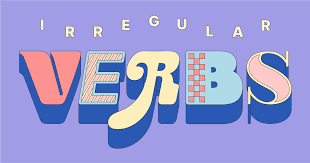To understand and use irregular verbs in the present perfect, remember unique past participle forms like ‘gone,’ ‘eaten,’ and ‘written.’ Combine ‘have’ with the past participle for correct sentences. Practice using ‘have’ or ‘has’ with irregular verb forms in exercises. Don’t forget verbs like ‘go,’ ‘eat,’ and ‘write’ have special past participles. Master these verbs to communicate effectively and boost your language skills. Keep exploring the irregular verbs to enhance your understanding further.
Common Irregular Verbs
Understanding irregular verbs is essential for mastering the present perfect tense in English. Common irregular verbs like ‘go,’ ‘eat,’ and ‘see’ have unique past participle forms that don’t follow regular patterns. When forming the present perfect tense with these verbs, you must remember to use the correct past participle. For example, instead of saying ‘I goed to the store,’ you should say ‘I have gone to the store.’
Other common irregular verbs include ‘take,’ ‘break,’ and ‘choose.’ These verbs also have irregular past participle forms that you need to memorize. For instance, you’d say ‘I have taken many photos’ instead of ‘I have took many photos.’
Forming the Present Perfect
To form the present perfect tense in English, you combine the auxiliary verb ‘have’ with the past participle form of the main verb. This tense is used to express actions that have happened at an unspecified time in the past or actions that have just been completed. For regular verbs, the past participle form is usually created by adding ‘-ed’ to the base verb. For example, ‘I have worked,’ ‘You have played,’ or ‘She has finished.’
When it comes to irregular verbs, things get a bit trickier. Irregular verbs have unique past participle forms that don’t follow the regular ‘-ed’ pattern. Examples include ‘I have broken,’ ‘You have sung,’ or ‘They have driven.’ It’s crucial to memorize the irregular past participle forms of these verbs to use the present perfect tense correctly.
Remember that the auxiliary verb ‘have’ changes based on the subject pronoun. For instance, ‘I have,’ ‘You have,’ ‘He/she/it has,’ ‘We have,’ ‘You have,’ and ‘They have.’ By mastering the formation of the present perfect tense, you can effectively communicate past actions and experiences.
Examples of Irregular Verbs
Examples of irregular verbs demonstrate the unique past participle forms that deviate from the standard ‘-ed’ pattern in English. For instance, the verb ‘go’ changes to ‘gone’ in the past participle form instead of ‘goed’.
Similarly, ‘eat’ becomes ‘eaten’ and ‘drink’ turns into ‘drunk’. These irregular verbs don’t follow the typical rules of adding ‘-ed’ to form the past participle.
Other examples include ‘write’ changing to ‘written’, ‘sing’ to ‘sung’, and ‘break’ to ‘broken’. Understanding these irregular forms is essential for correctly using the present perfect tense in English.
By memorizing these irregular verb forms, you can communicate more effectively and accurately in both spoken and written English. Practice using these irregular verbs in sentences to become more comfortable with their usage.
Once you master these irregular verbs, forming the present perfect tense will become easier for you.
Tips for Conjugation
For smoother language use, consider employing common conjugation tips when forming present perfect sentences. When dealing with irregular verbs in the present perfect tense, it’s essential to memorize their past participle forms. For instance, ‘go’ becomes ‘gone,’ ‘eat’ turns into ‘eaten,’ and ‘see’ transforms into ‘seen.’ Understanding these irregular forms can greatly assist you in constructing accurate sentences.
To conjugate irregular verbs in the present perfect tense, remember to use the auxiliary verb ‘have’ or ‘has’ followed by the past participle of the main verb. For example, ‘I have eaten pizza,’ ‘She has gone to the store,’ or ‘They have seen the movie.’ Ensuring the correct form of the auxiliary verb ‘have’ or ‘has’ and pairing it with the appropriate past participle is crucial for accurate conjugation.
Practice different irregular verbs in the present perfect tense to enhance your conjugation skills. By applying these tips consistently, you’ll become more proficient in forming present perfect sentences with irregular verbs.
Practice Exercises
Let’s put your knowledge of irregular verbs in the present perfect tense to the test with some practice exercises. In this exercise, you’ll have the opportunity to apply what you’ve learned about conjugating irregular verbs correctly.
Begin by conjugating the verb ‘to go.’ Have you __ to the new restaurant in town yet? The correct form here is ‘Have you gone.’
Next, let’s try ‘to eat.’ She __ sushi before, but she didn’t like it. The correct answer is ‘She has eaten.’
Now, let’s move on to ‘to write.’ They __ three books since last year. The correct form to use is ‘have written.’
For the verb ‘to break,’ we have: I’m sorry, but I __ the vase you lent me. The correct answer is ‘I have broken.’
Lastly, let’s tackle ‘to choose.’ We __ the red dress for the party. The correct form is ‘We have chosen.’
Keep practicing to master these irregular verbs in the present perfect tense!
Frequently Asked Questions
Can Irregular Verbs in the Present Perfect Tense Have Different Conjugations for Different Subjects?
Yes, irregular verbs in the present perfect tense can have different conjugations for different subjects. Understanding these variations is crucial for correct usage. Practice conjugating irregular verbs to improve your grasp of this concept.
Are There Any Irregular Verbs That Do Not Follow Any Patterns in the Present Perfect Tense?
Yes, there are irregular verbs that defy patterns in the present perfect tense. They don’t follow the usual rules, so memorizing their forms is crucial. Understanding these exceptions will help you communicate accurately.
How Can I Remember the Irregular Forms of Verbs in the Present Perfect Tense More Easily?
To remember irregular verb forms in the present perfect tense more easily, create flashcards, practice regularly, and use them in sentences. Repetition helps reinforce memory. Stay consistent with your practice, and soon you’ll master these irregular verbs effortlessly.
Are There Any Common Mistakes That Learners Make When Conjugating Irregular Verbs in the Present Perfect Tense?
When conjugating irregular verbs in the present perfect tense, learners commonly mix up irregular past participles or forget to use the auxiliary verb “have” correctly. Practicing regularly and memorizing irregular forms can help avoid these errors.
Can the Same Irregular Verb Have Different Meanings When Used in the Present Perfect Tense Compared to Other Tenses?
Yes, the same irregular verb can indeed have different meanings when used in the present perfect tense compared to other tenses. This variation adds depth and nuance to your language skills, enhancing your communication abilities.
Conclusion
You’ve now mastered the art of conjugating irregular verbs in the present perfect tense. By understanding common irregular verbs, forming the present perfect correctly, and practicing conjugation, you have unlocked a key aspect of English grammar.
Keep practicing and applying these skills in your writing and conversations to solidify your understanding. Congratulations on your progress! Keep up the great work!

